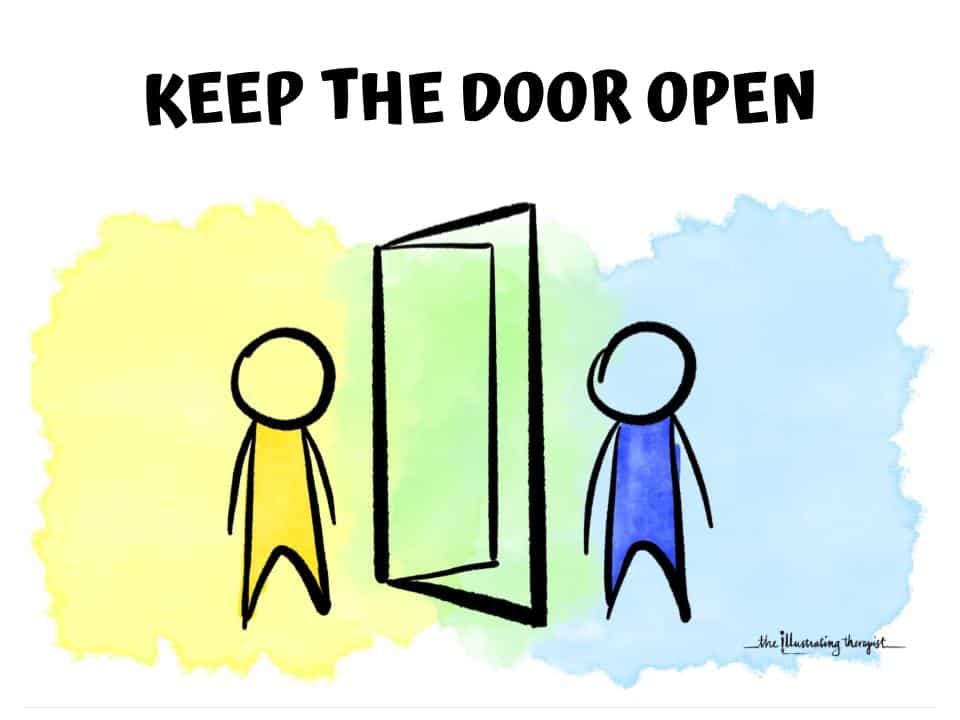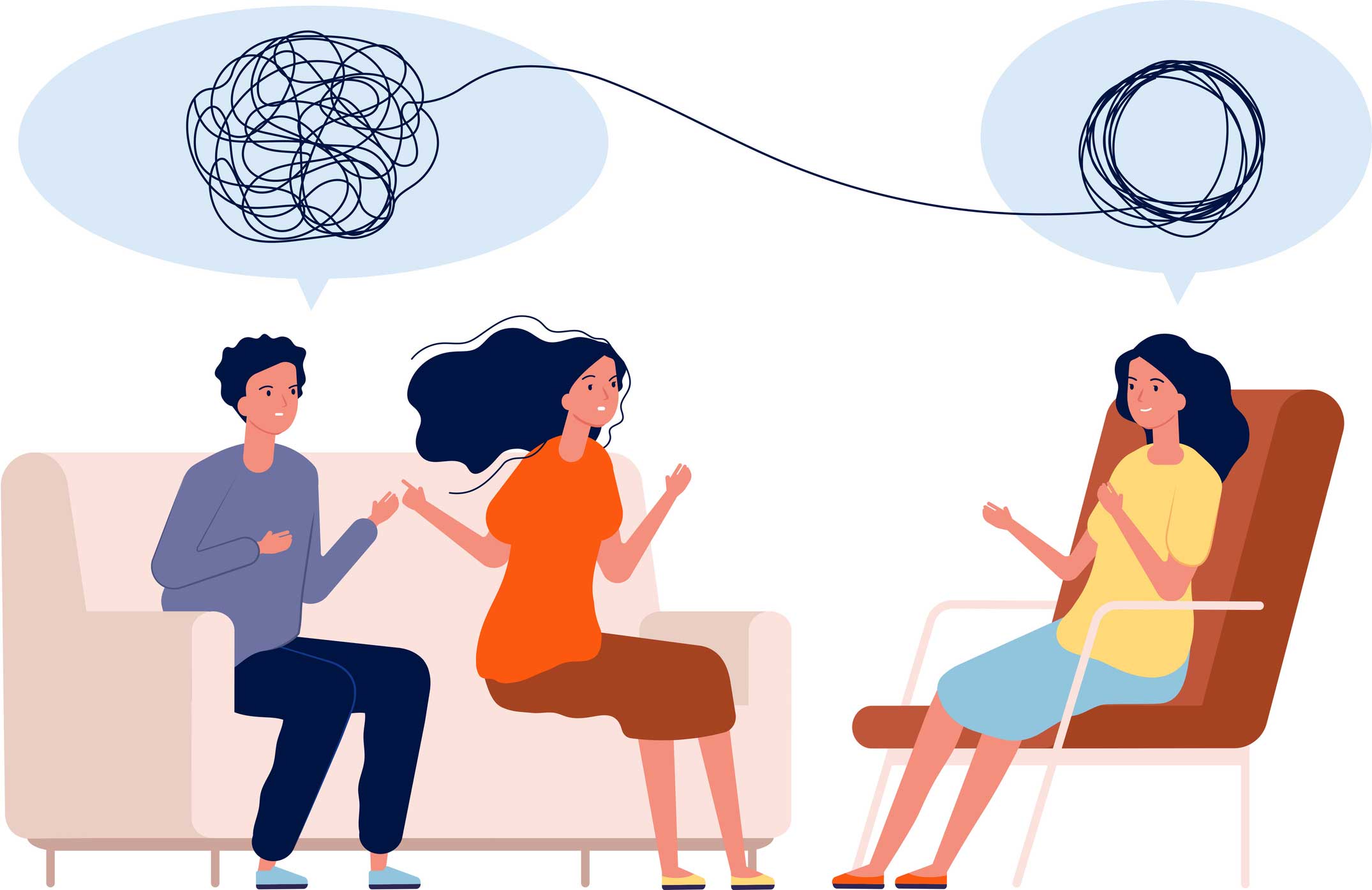We’ve been on a journey together exploring the external behavior of self-absorbed partners. And although they often mislead therapists with detours and distractions, we’ve stayed focused on understanding their behavior and why they often challenge their spouses and their therapists.
We reviewed how self-absorbed partners objectify their spouses and push their own interests and desires into the foreground. We’ve come to understand the enormous loneliness and helplessness their partners experience.
I discussed six challenges self-absorbed partners create for therapists, including how hard it can be to recognize and track progress. We’ve acknowledged that all of us are self-centered at times. And that self-absorption often arises from trauma and neglect. So in describing self-absorption I don’t mean to disparage the self-absorbed partner.
However, because self-absorption creates so much pain and disillusionment in relationships, I believe it is essential to increase our skills in transforming the internal world of the self-absorbed partner. This dynamic is so common, we just can’t ignore it!
So, let’s go deeper into intervention and change strategy.
I’m going to demonstrate how to create intrapsychic change and explain why being able to reach this deeper level is crucial for couples to feel substantially changed and for you to feel like you have the expertise to know that you’ve competently made a big difference.
I compare therapy with self-absorbed partners to gloaming.
In ancient myth, gloaming is the twilight between day and night. It’s the place between the known and the unknown, the ordinary and the extraordinary. Gloaming is the “blue hour” as the day transitions into night and night into day, where there is neither full daylight nor complete darkness. Lions and leopards awaken. They prowl. It’s just that time when rarely seen behaviors emerge from the shadows.
You can see where I’m going with this. Your office is the place and time of gloaming for the self-absorbed partner and their spouse. You will be shining a light – and just the right light – for a whole new world to emerge and for all of you to sit with and accept that which is emerging.
It’s important to realize that self-absorbed partners have an intrapsychic conflict that they prefer to obscure. They usually have a self-centered demanding side that has voices that are not socially acceptable. They prefer to hide these voices. There may also be another weaker side that feels guilty or thinks they should behave in more socially acceptable ways.
This is a key insight into working with the self-absorbed partner. You must expose their internal process, while being non-judgmental. Gestalt two-chair work is an elegant way to expose these voices and the hidden intrapsychic struggle.
Below you will find a composite demo of some two-chair work done over several sessions by Pete with a self-absorbed client. I will comment on some of the subtleties of Pete’s interventions.
Two-chair work can be done in individual sessions with the self-absorbed partner or in front of their partner during couples sessions. There are significant advantages and disadvantages to each choice and it is usually best to intermix both types of sessions.
Pete and I always prepare for the exercise by gathering relevant information about the stresses each partner faces in their relationship. We ask the self-absorbed partner if there is any part of them – even a small part – that thinks their partner has at least some legitimate complaints about their self-centeredness.
After gathering relevant information, Pete asked Bob, the self-absorbed partner, “Is there any part of you – even a small part of you that thinks your wife has some legitimate complaints about you?”
This is where you get the first leverage. Without this beginning agreement that there are some legitimate complaints, you will be exploring and giving insights to an unreceptive partner.
Intrapsychic change just won’t occur when this partner remains resistant with you!
After Pete gets agreement from his client, Bob, that his wife has some legitimate complaints, then he begins the two-chair work. He will be asking Bob to dialogue between the self-absorbed side of himself and the side that just mildly aspires to some change. Pete’s first focus is on exposing the thoughts and feelings of the self-absorbed side.
Notice that Pete is not pushing for any change. He wants to expose what the self-absorbed part has to say, while keeping himself out of the middle of the entrenched “civil war.” Early in the two-chair process he does not want to align with either side.
For the purpose of this transcript I will label the self-absorbed side as “SA Bob” and the side motivated to change as “Aspiring Bob.”
Pete: So you agree your partner has some legitimate complaints about you. Is there any part of you that aspires to create a better relationship with your wife? Would you like to be a little more giving, a little more responsive to her? It doesn’t even have to be a big part. Just some part of you that thinks it would be better to improve your relationship in any way that makes sense to you?
Aspiring Bob: Well, yeah.
Pete: Why might you want to do any of those things?
Here Pete is looking for any bit of motivation for change.
Aspiring Bob: Well so she wouldn’t be so angry with me. I might get a little more sex.
Pete: Anything else?
Aspiring Bob: Not that I can think of.
Pete does not get a lot but it is a start.
Pete: Ok that’s good. If humans were driven by logic, we could just start working on improving your relationship, so you’d be a little more giving when it isn’t convenient, and you could start collecting some of those benefits.
But relationships are not driven by logic. Anytime we have a goal that stretches us, there will be another voice – kind of like an alter ego, which will have a different perspective. Usually the perspective will be in the form of, “Well, that sounds pretty good, BUT …”
So move over here to another chair and let’s hear from the other voice. (Bob moves to the self-absorbed chair).
Note how skillfully Pete is letting the client know that it is okay to express his self-absorption out loud.
Pete: You just named a few advantages of putting in the effort to try to improve your relationship. What would you say to the guy in the other chair who might put in that effort?
SA Bob: Well that sounds good but I don’t believe it will turn out that way. You’ll invest all that effort for nothing. I just don’t see it being worth it. Seems like you’ll put out effort and not get much in return.
Pete: Ok come back over here to the first chair to the part that aspires to change.
Bob moves.
Pete: How would you respond back to him?
Aspiring Bob: Give me a chance – something good may happen.
Pete: Go back to the other chair that says “Yes but.” How would the part that doesn’t see value in changing reply?
SA Bob: Things aren’t so bad now. I can live with me the way I am now. I get a lot of what I want the way I am without too much effort. You don’t have to bother. The risk reward ratio is not worth you making the effort.
Pete: It makes sense from this guy’s perspective. Out of curiosity, how did you evolve this kind of approach? You likely see some advantages of viewing life and relationships this way.
They go on with Bob describing some of the reasons he came to be this way.
Notice that throughout this dialogue, Pete is not trying to change any cognitive distortions or self-sabotaging attitudes. He is building a stronger alliance with each part, understanding each side more completely and setting the stage for a lot more intrapsychic dialogue.
These two alter egos will need to go head to head later and Pete does not want to be aligned with either side. He also does not want to be perceived as a bully who is aligning with Bob’s wife. He doesn’t criticize, challenge or confront the obvious limitations of a selfish approach to relationships.
In the next session, Pete will start to heighten the conflict between the two sides.
Pete: Bob, will you sit in the chair of the guy who aspires to change and give the other guy one reason to consider changing.
Aspiring Bob: You’re stupid and short-sighted. You could get more from life if you were more thoughtful and giving to your wife and friends. You’d get more respect.
Pete: Now switch and respond to yourself.
SA Bob: I don’t care about those goals. I am not interested in following your path. I like doing whatever I want whenever I want.
Pete: It sounds like you don’t want him nudging you.
SA Bob: That’s right. He thinks he can boss me into being a better person but he’s wrong.
Pete: Let’s switch again and see what the side that aspires to change says.
Aspiring Bob: Think about what you are saying. Grow up already. Where has this gotten you?
The side that aspires to change has just responded more vehemently.
Pete: Switch again and respond from the side that is not so interested in going along.
SA Bob: You think you can boss me. You think you can override me but you are wrong. I’m smarter than you are. I know there isn’t any pot of gold at the end of the rainbow.
Ellyn: Notice how relaxed Pete is about what he is hearing. Pete’s relaxed acceptance allows the two sides to keep talking and being as strong as they each feel.
The strength of what Bob exposed to Pete allowed Pete to know that the self-absorption was very pervasive. Bob could feel the value of what that side does but he did not experience much value in being more giving.
Change takes time, patience and understanding. Pete needs to keep a good relationship with each alter ego so that they trust that Pete does not have an agenda. This is counter-intuitive to us as therapists because we are supposed to facilitate change as quickly as possible.
As I write this to you, I realize there is so much more to share about how the internalized selfishness begins to shift. If I make it quick and easy, you won’t believe me. If I put too much into one blog, it will be hard for you to integrate it all. And I realize I haven’t even started talking about how couples can coach each other and also work systemically to move from the “I-It” relationship to the “I-Thou” relationship or from “I-Need” to “I-Give.”
So, I’ve made a few decisions. This is such a rich transcript on a complex topic that I’ve decided to send one more blog post discussing the process with Bob. I’ll write up more of the two-chair process in another post, which I’ll send in a few days. I’ll also include a description of how Bob’s wife perceives his evolution.
Pete and I have also decided to dig even deeper into this topic by kicking off September’s training with a live call on self-absorption. We’ll include more about how to transform couples with self-absorbed partners and how the partners can work together as a coaching team.
If you’re already in the my training program, you’ll automatically get to join this special call.
If you're not yet in my online couples therapy training program, you will have a chance to join soon. We open registration in the fall.
In my training over the next few months I’ll be putting much more emphasis on transforming partners who take a lot more than they give.
I’ll send the next installment in just a couple of days. Before then, please comment on where you would pick up in the next session. Bob has exposed the strength of the self-centered side. He likes his life that way. So, what’s next?
If you missed the videos in this series on self-absorbed partners, you can see part one here and part two here. If you’d like to advance in the series, please click here for part four.



 We respect your privacy.
We respect your privacy.





As a next step, I would inquire further into Bob’s ideas of personal freedom. Bob’s self absorbed side feels “free” by not being “bossed” into being a better person by his aspiring side. I would ask where/when does the aspiring side feel free – and how does it differ from the self-absorbed side. Also, if the self absorbed side were to find himself single (for any reason), would this change his sense of “freedom” at all?
thank you so much for sending these Ellen. I have super minimal experience with couples (as in briefly doing intakes 40 years ago) but am intrigued by the idea now that I’m finally trying to start up a small private practice.
I would ask the SA side if there was one change he’d be willing to try for a week to see how it feels, with no obligation to continue after that, just as an experiment. Providing experience of potential positive outcome is important with couples. I look forward to reading more. Thank you for providing this invaluable support!
Thanks for the puzzle! I have not studied your materials yet, but I will attempt an answer, though I am sure it will be a different approach to what you are going to suggest.
Very likely the comments about “not being bossed”, “being smarter”, and “freedom” would be fruitful in exploring, as Jeanette suggests. But I would be uncomfortable escalating the brewing inner conflict between sides vying for control, because the Aspirational side is the weaker (note how hostile it feels it has to be) and it will be difficult for the SA side to be vanquished. So those two sides must be joined again eventually.
I’m more interested in Bob’s comments that use economic terms. SA Bob feels there would be a “cost and likely not much benefit, the risk/reward ratio is not worth making the effort, there is no pot of gold”, etc. Continuing the metaphor that Bob has provided, I might employ the idea of the interpersonal or emotional bank account:
“It sounds like you are a careful person who looks for value, and keeps track of how much you expend on others. And you do not want to spend too much to get what it seems you can get for free. I wonder, if you were to imagine what you have, your personal resources, your ability or desire to care about others, or whatever you were talking about, as money in the bank, I wonder what you would name that account? And you have a limited amount of it – we all have a limited amount, even the richest of us – how much would you say is in that account? A little, or a lot?”
If he says a little, he is admitting a need or deficit or shortfall, and that can be explored over time. How does he get his narcissistic supply, when and how would he know he has enough? What are some alternative ways to feel richer in that account?
If he says a lot, then I would question how much he is planning on building up, what would be a comfortable balance upon which he could “retire”, and what is the measure of that worth? And most importantly, since money kept in the bank is by itself useless, how would he want to eventually spend that balance, and what or who would he be spending it on?
How much would he say it would cost him to expend an effort (using a specific example of a minor complaint of his wife), and how does that feel when he is doing that? And how would he know when he is getting a worthwhile return on his investment in that case? Would she already know about what would be rewarding to him in response? Etc. (Personal experiment, as Lynn suggests.)
Perhaps that would lead to the idea that each of us has such an account or accounts, including his wife. I wonder if he would say that she is managing her account with him wisely, as far as what she could get and how much she gives (eliciting empathy, expand theory of mind.)
On the surface, I would be leading to changing the metaphor from one of cost/benefit to one of investment for future returns. But eventually, I would hope for a realization that the narcissistic model of caring as a limited resource is faulty, and hope for Aspiring Bob to propose an alternative model, using a the realization that in the interpersonal economy, the more he gives, the more he gets.
Thanks for the opportunity to comment. I look forward to learning more the next episode!
about the inner landscape of the self-absorbed partner, here a dream he brought to me: “I was near a frozen lake, then the ice melted and I saw a big emptiness, the lake was totally empty”. Was he speaking about his personal trauma and neglect? or, also, about his own loneliness and helplessness, projected on his wife?
thanks for your wonderful work, Elena
The sides of Bob are typical of so many angry, disenchanted , self absorbed, but also personally *entitled* men. How does it feel, I would ask the self absorbed Bob, to have ten times the testosterone, and interest in sex, and have so little satisfaction from each release–that you constantly be look for more?
Apparently (according to the perinatal research on outcomes from medical interventions close to birth) some of the the anger and sexual obsession/incompletion– come from the trauma of circumcision (men without circumcisions CAN have multiple orgasms and need less sex and experience greater gratitude and satisfaction in the act).
The diminished desire to please seems to stem from social attitudes of male entitlement –I can get it without giving a thing because I never got the *THING* (attachment) in the first place: they had the POOR ATTACHMENT-BONDING scenario of modern birth techniques–birthing with the mother on her back-counter to gravity, cutting the cord early–weakens the baby by not providing the full stem cells coming to him/her, not enough breast feeding and skin to skin time–when babies are immediately zipped away from their mothers.
Babies are emotionally and psychologically SENSATE and RESENT this crass treatment, as does the minimized mother, who has little to say about Hospital policy at such a vulnerable time. Does it help to see the roots of the problem?
This may be something men unconsciously or outright BLAME on women–but it is the modern birthing process which has brought about disease, epigenetically, and it is disease both emotional and physical. How can we stop the cycle: Address birthing policies across the board.
Thank you for naming birth and circumcision here. Most important and relevant. I’ve been searching for the bumper sticker from the 80s/90s that read, “peace on earth begins with birth” with a picture of a mama and a baby whale swimming together
Biodynamic Cranial Sacral Tx is a great modality to refer folks to for these pieces …
I would ask the SA Bob, if he stays on the path of “I like it this way,” where will this eventually lead the relationship. Noting that once an arrow is sent on a trajectory towards a target it will eventually hit the target, using this example, what is he is aiming at, what is his target.
I might start off with asking him where he was today and what thoughts did he have about the previous session. Which Bob did he find himself identifying with more since and which Bob he was identifying with today?
Thank you all for your comments. I enjoy hearing your perspectives which reinforce the richness,complexities, and challenges of our work with couples.
Sometimes I enjoy working with my hands on house projects. Building a deck, a little re-roofing etc. One of the things that make it satisfying is that when i return to work on it the next day, it is just where I left off. The deck hasn’t collapsed over night and I have to begin again. Unlike a lot of couples work 🙂
Thanks again for caring enough to comment
Pete
I think with this intrapsychic techniques, I would want to gently know over time, where and how the SA part learned there was no pot of gold at the end of the rainbow; what this part remembers, when he first remembers feeling this way or believing this, as it certainly sounds like it comes from earlier wounding.
I know that this topic has not been open on this website for a while but the issues still exist. How does a person become SA is the ultimate question and does it matter in the bigger sense of dealing with SA behaviour?
I am going to say for my SA partner I have realised exactly where his SA behaviour came from. He was molested as a kid, at six years old, developed hyper sexual behaviour and I think this comes from the fact that this developed into a dislike for women because of the perceived control that women actually hold over men when it comes to sex, voices that are not socially acceptable and all. In a manner of speaking.
To Elaine’s point he can have ten times the testosterone, and interest in sex, and have so little satisfaction from each release that you constantly be look for more, that was the behaviour at the time.
So we have talked about how to deal with these SA partners but how do we address the issue of how a person becomes SA in the first place. Could that maybe be a point of identification or at least something that triggers or activates the SA behaviour?